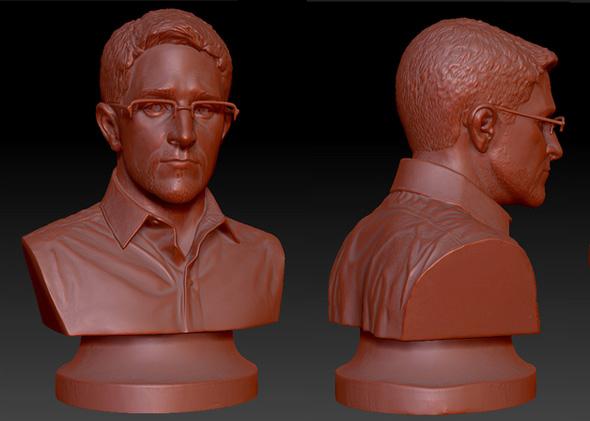In April, an 100-pound bust of whistleblower Edward Snowden appeared in Fort Greene Park in Brooklyn. The Parks Department quickly covered the piece with a tarp, and then the New York Police Department removed it, but the incident got significant press. Now the people behind the bust—Andrew Tider, Jeff Greenspan, and Doyle Trankina—have released designs for a 3-D–printable version, so anyone can have an 8-inch Snowden in their home or office.
The Snowden bust was originally placed on the Prison Ship Martyrs Monument, which commemorates Revolutionary War soldiers, as a commentary on the connection between Snowden and the values underlying the founding of the United States. “There is an element of challenging who your heroes are,” Greenspan said.
The 3-D–printable bust is a replica of the original, which is known as the Prison Ship Martyrs Monument 2.0 or “The Snowden Statue.” Tider and Greenspan say that the statue’s sculptor, Doyle Trankina, was the one who originally suggested 3-D scanning the bust for archival reasons. But as word spread about the piece, the group began discussing the idea of posting the scans online for 3-D printing as a way of cultivating and continuing the project’s momentum.
“We figured, not everyone needs to be so theatrical and dramatic and guerilla and borderline illegal to make a statement. Everyone can have their small way of keeping the ball up in the air,” said Greenspan.
Since the scans were posted on Friday, people have been making their own 3-D–printed Snowdens and sharing their projects on social networks. Tider and Greenspan also say that since they recovered the bust from the NYPD there has been a lot of interest in finding a permanent public place for it to be displayed. And Tider says that when he went to pick up the bust from the NYPD, numerous officers expressed appreciation for the piece and took photos of it.
“Much of the mainstream media had portrayed [Snowden] as a traitor, and that didn’t really allow people to have a debate about the revelations,” Tider said. “We wanted to propose an alternative narrative in a somewhat dramatic way so that same media would be compelled to write about it and citizens would have the space to consider.”
Pranks supporting Snowden seem to be on the rise. A few days after the Brooklyn statue went up (and came down), a trick in Google Maps made it look like Snowden was sitting in the White House.
